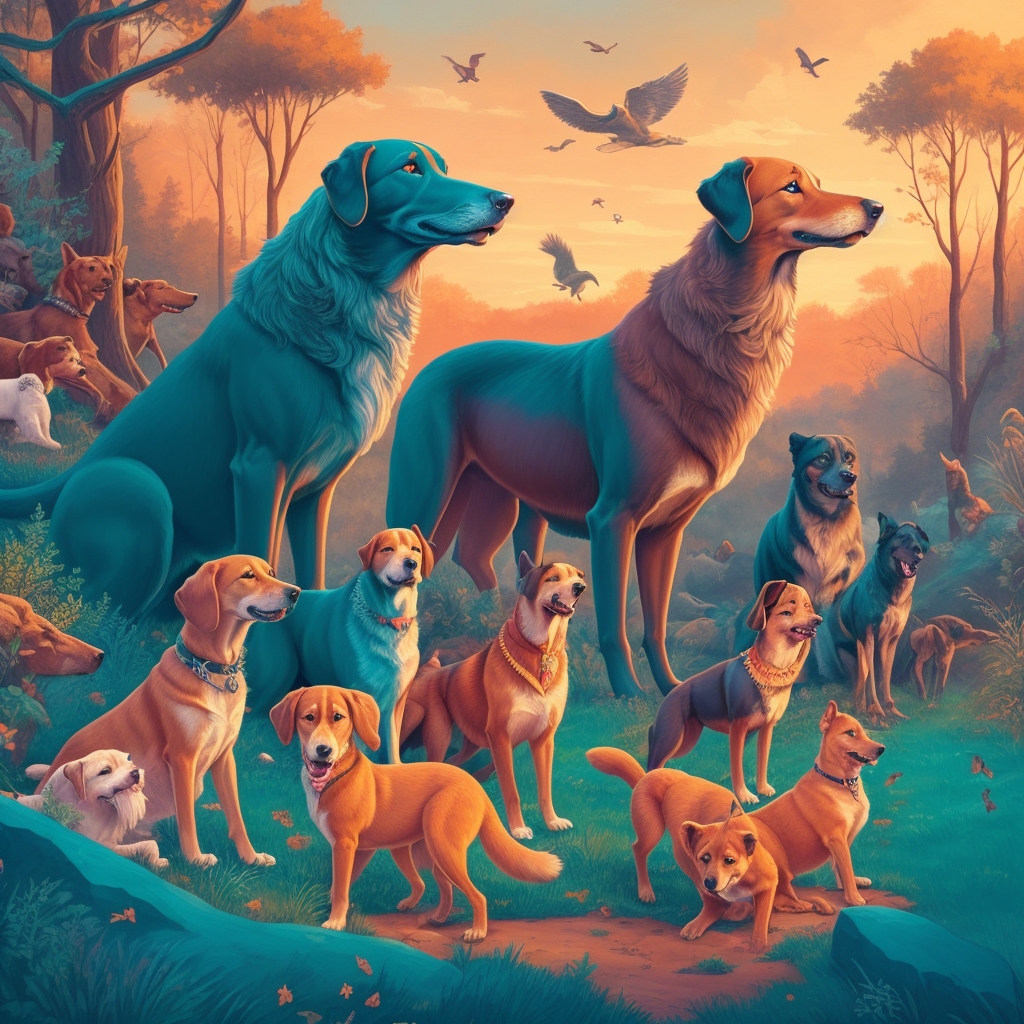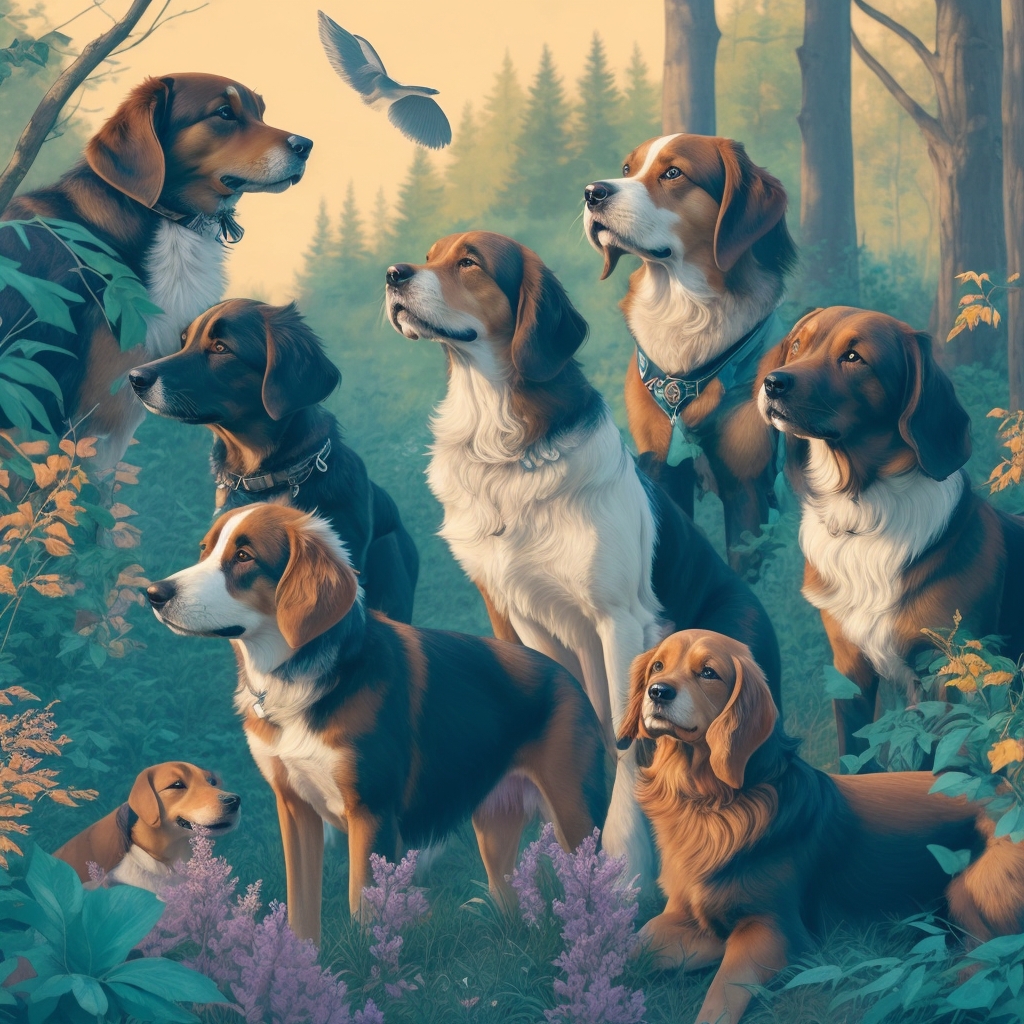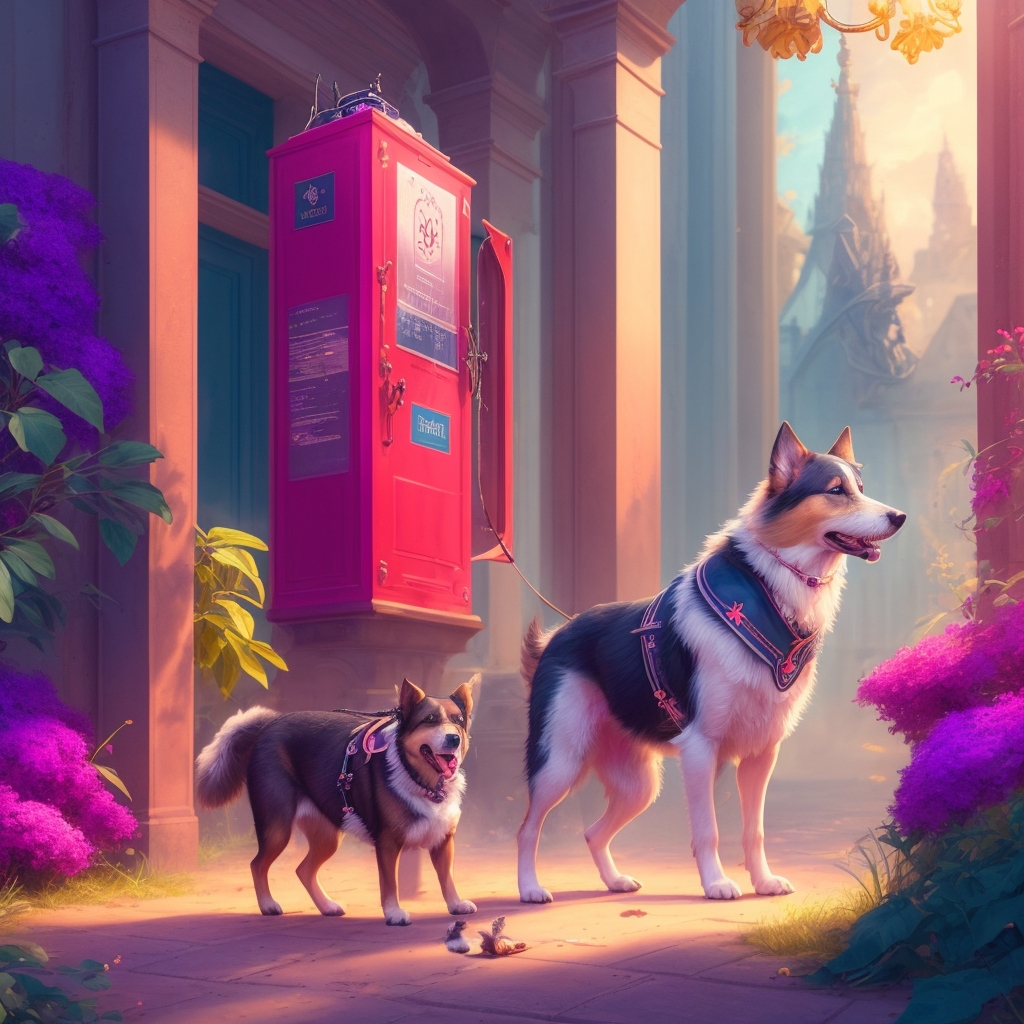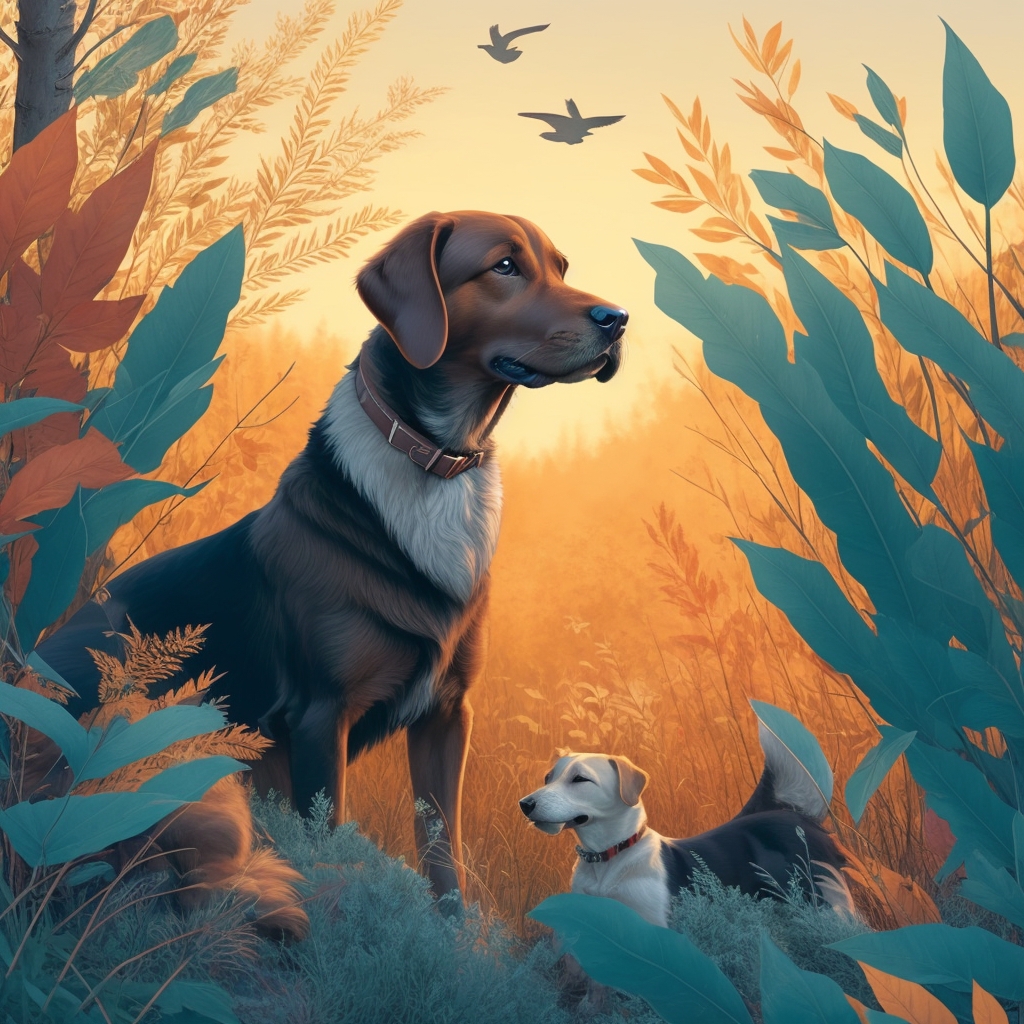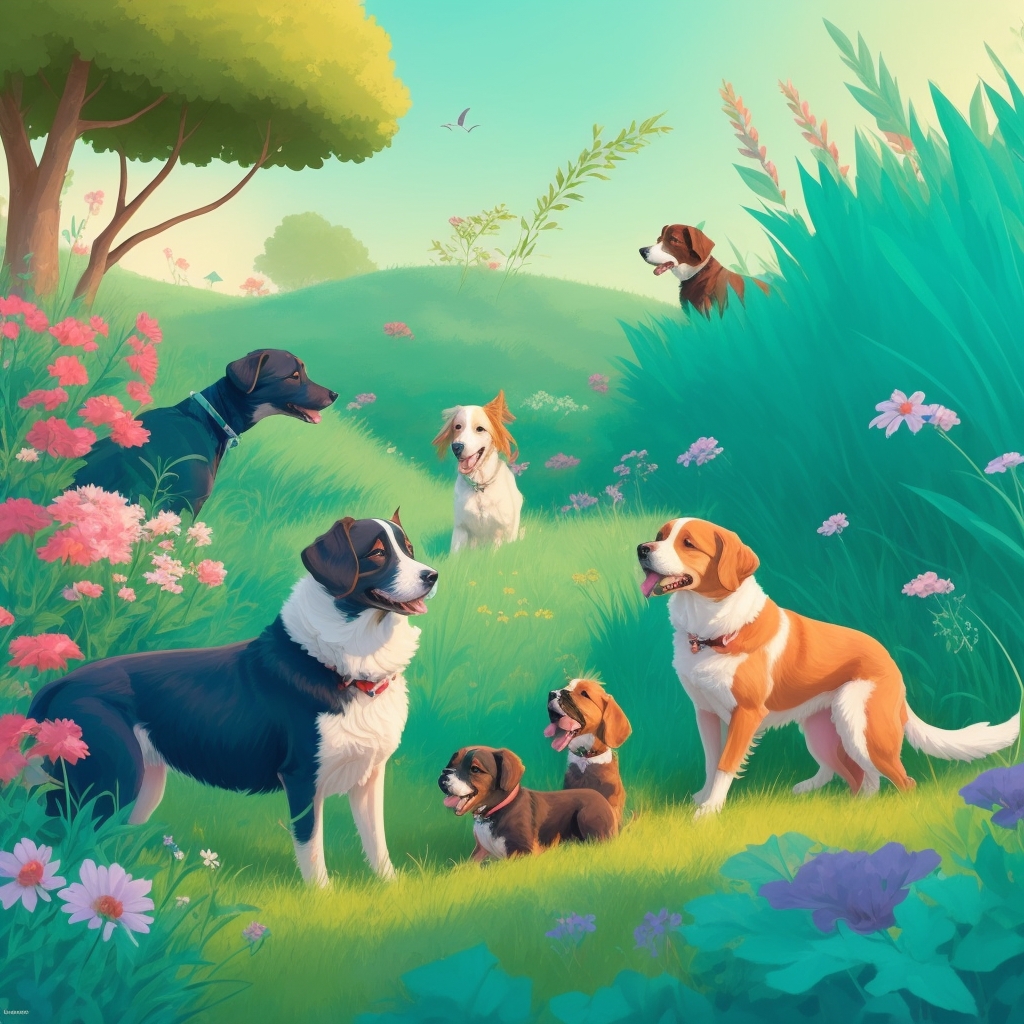The history of hunting dogs is deeply intertwined with that of humanity. For millennia, humans have domesticated these animals to aid them in their quest for survival. Hunting dogs, in particular, have played an essential role in gathering food, but also in establishing social, cultural, and economic relationships. This article provides a detailed overview of the evolution of hunting dogs, from their domestication to their modern role in society.
Origins of Domestication
The Domestication of Early Dogs
The ancestors of modern dogs, wolves, were domesticated by humans approximately 20,000 to 40,000 years ago. This domestication likely occurred when less fearful wolves approached human camps, attracted by food scraps. Over time, these animals developed more sociable behaviors, thus establishing a mutually beneficial partnership.
Hunting Dogs in Ancient Societies
Early civilizations, such as those in ancient Egypt, Babylon, and Mesopotamia, already used dogs for hunting. The Egyptians, for example, used dogs to track game, and there are depictions of these dogs in Egyptian art. The Babylonians, meanwhile, valued hunting dogs for their speed and agility.
Types of Hunting Dogs
Scent Hounds
These dogs are primarily used to locate game. Their exceptional sense of smell makes them indispensable in hunting activities. Breeds like the Bloodhound are famous for their ability to follow trails over long distances.
Pointers and Setters
Pointers and setters, such as Spaniels and Setters, play a crucial role in bird hunting. Their natural instinct leads them to stop and point towards game, allowing hunters to approach without startling the prey.
Retrievers
These dogs, such as Retrievers, are trained to retrieve downed game. Their gentle nature and ability to swim make them valuable allies during waterfowl hunts.
Terriers
Terriers are small dogs used to hunt burrowing animals, like rats and rabbits. Their agility and tenacity make them particularly effective in these roles.
Concrete Examples and Use Cases
Pheasant Hunting
In the British countryside, pheasant hunting is an ancient tradition. English Springer Spaniels and English Setters are often used for this activity. These dogs are trained to locate pheasants hidden in bushes, allowing hunters to shoot with precision.
Bear Hunting
In some regions of North America, dogs like Plott Hounds are used to track bears. Their agility and strength allow them to follow bears over long distances, alerting hunters to their position.
Partridge Hunting
In France, hunting dogs, such as the French Braque, are often used for partridge hunting. These dogs are able to work closely with hunters, stopping to point out partridges and thus facilitating their capture.
Key Points and Best Practices
Training Hunting Dogs
Training is essential to develop the skills of hunting dogs. Here are some best practices:
- Start Early: Training should begin from a young age to develop the dog’s natural instincts.
- Use Rewards: Rewards can encourage positive behavior and reinforce learning.
- Socialization: Exposure to diverse environments and situations helps dogs adapt during hunts.
Health and Well-being
A healthy hunting dog is a valuable asset. Here are some tips:
- Regular Vet Visits: Regular health check-ups allow for early detection of potential health problems.
- Appropriate Diet: A balanced diet is crucial for maintaining the dog’s energy and vitality.
- Regular Exercise: Hunting dogs require sufficient physical activity to stay in shape.
Hunting Ethics
Responsible hunting involves ethical practices. Hunters must respect local laws and ensure their practice does not compromise animal populations. Furthermore, respecting hunting seasons and game quotas is essential for species conservation.
Conclusion
The history of hunting dogs is rich and varied, bearing witness to the evolving relationship between humans and their best friends. These animals have not only contributed to human survival throughout the ages but continue to play an essential role in contemporary cultural and sporting practices. Understanding their evolution, types, and practical uses can help us better appreciate these hunting companions while promoting ethical and responsible practices. Whether one is a hunter or simply passionate about these animals, it is crucial to recognize the historical and cultural importance of hunting dogs in our society.
